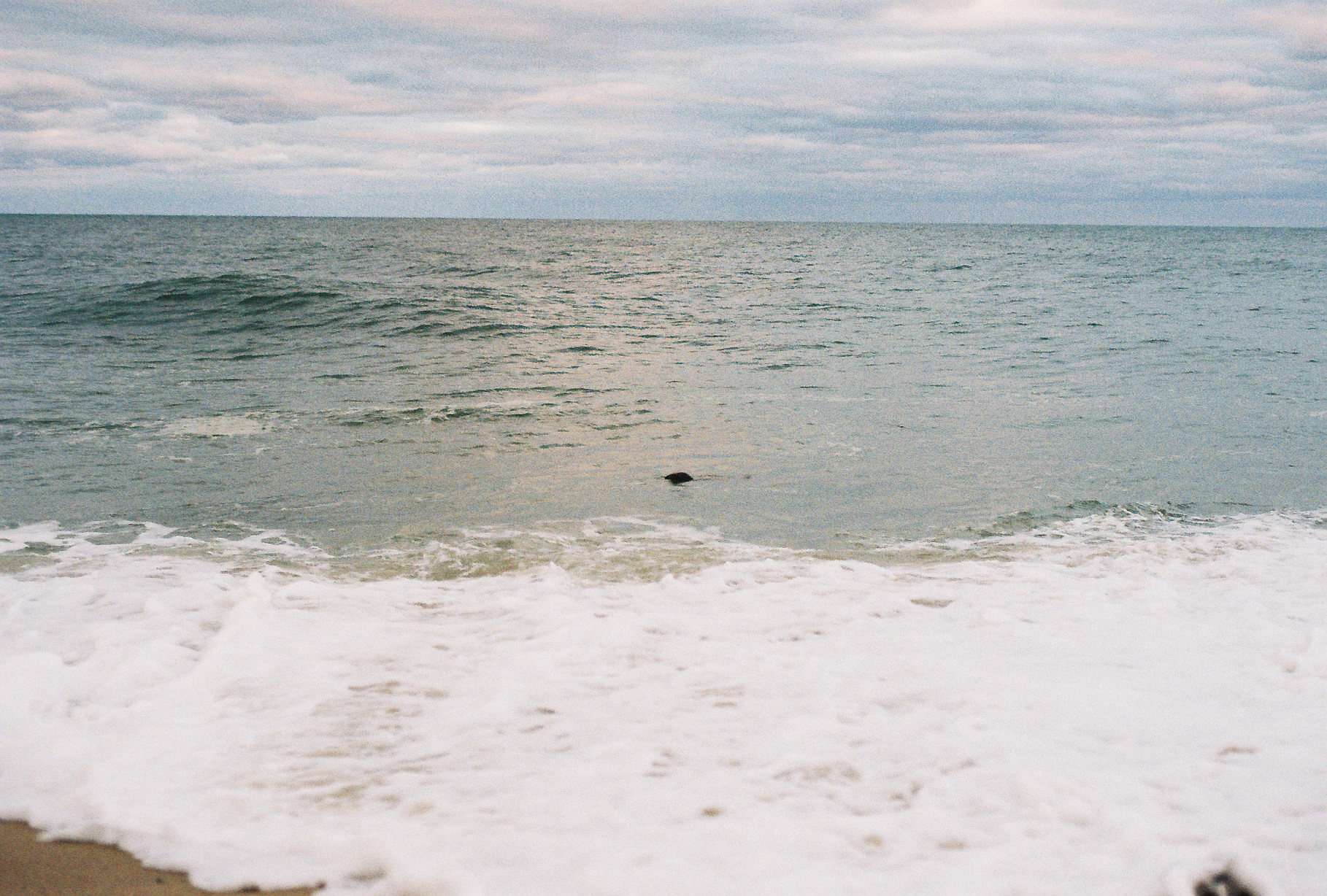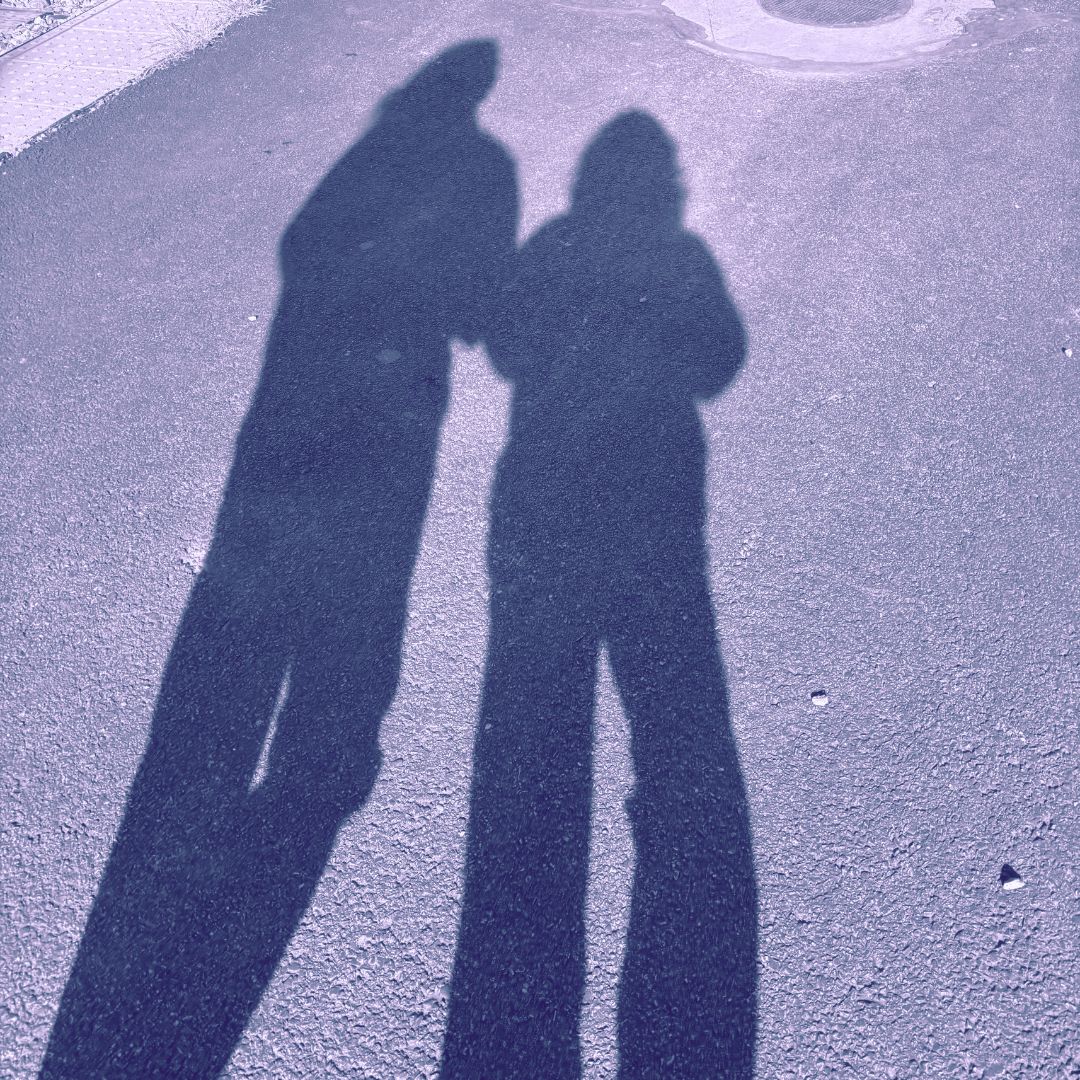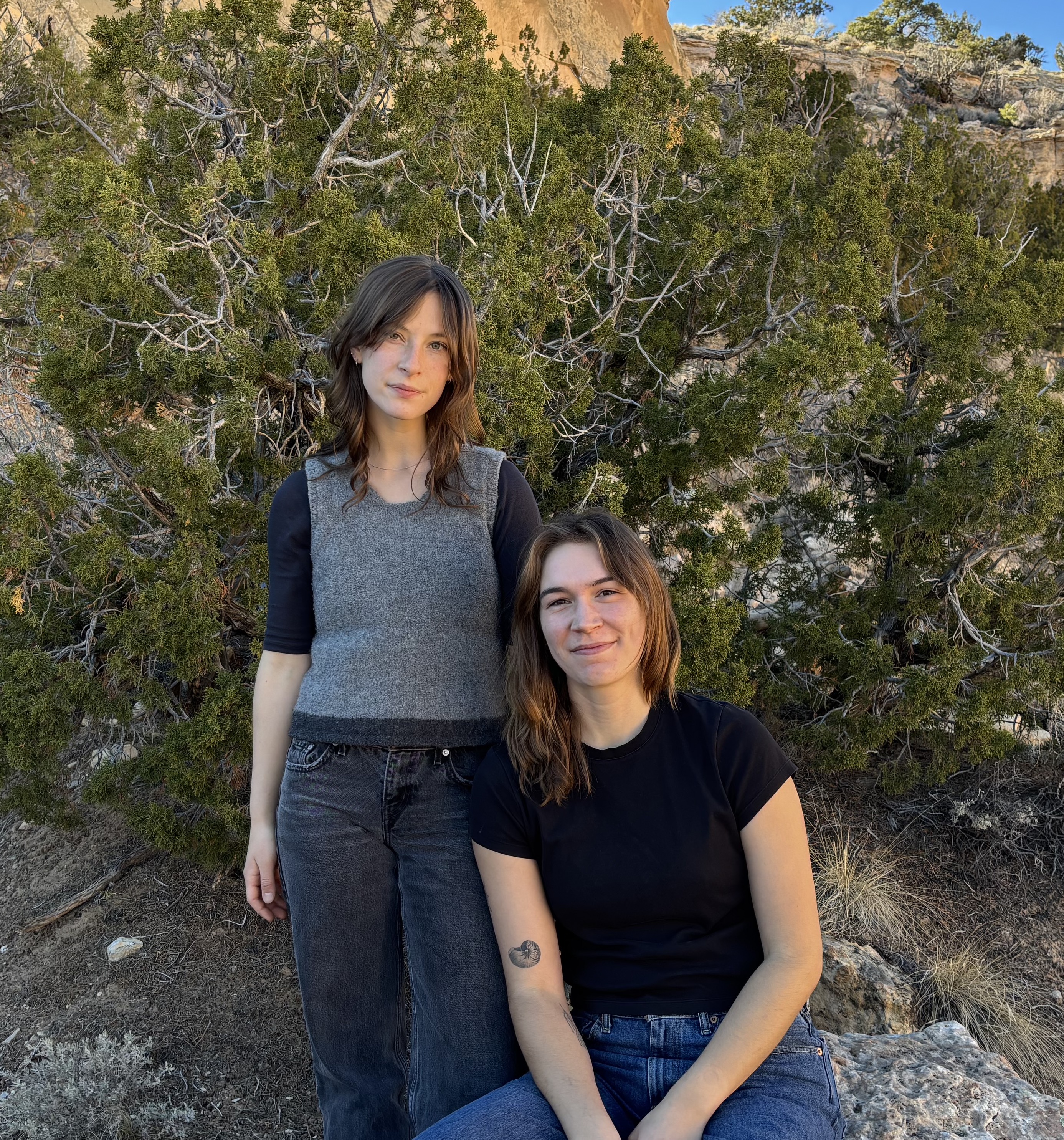A conversation on dreams, rest, the possibilities and faultlines of the internet, and the emergence of Lullaby Machine, written back and forth between the editors.
***
Olivia Q. Pintair: I had a dream recently, where I couldn’t stay awake. I was running through a forest of thin, densely-growing trees, following an animal who was leading me somewhere magical, I thought, and also being chased by a creepy man who was following us. The whole time, despite the high-stress situation, I couldn't stop falling asleep. I was still in the forest, but everything kept going black. It was like I was suddenly narcoleptic, or like the dream was glitching.
It made me wonder what it would mean to fall asleep inside of a dream——would that be a way of waking up? Or of falling further into another dimension of dreaming? It reminded me of how easily dreams can untether my sense of the world’s linearity. Have you had any dreams lately?
Maia Sauer: Last night, I dreamed I was stressed at work, messing up simple tasks left and right. In my sleepy haze, I was convinced that I had forgotten to give someone a crucial phone call, while at the same time aware that I was conjuring the whole storyline somewhere deep in my subconscious. Dreaming like this definitely feels nonlinear. It reminds me how thin the line between dream- and waking-worlds can be. When I tune into these liminal states, I feel a huge sense of possibility. The weird contours of dreamscapes often feel just as real as my waking life. Maybe the vague repetition of the word liminal has bled it of meaning, but it feels like an important starting point for fleshing out this dreamy business. What do liminal places feel like for you?
OQP: When I think of liminal or in-between places, I think of dreams, daydreams, bogs, and airports. I think of Tumblr and digital chatrooms and video games. I think of highways, and of how on the scale of geologic time, the fact that I can drive thousands of miles fueled by gas made from ancient bones is a very new and dreamlike phenomenon.
I agree that the word liminal is an important starting point. I learned that it literally means to "occupy a position on both sides of a threshold," which I think is a useful concept, especially in a culture that likes to demarcate stark lines of power between supposed opposites, like life and death, reality and unreality, sanity and insanity, etc. I think words that indicate a space between those states of being——a space wide and complicated enough to physically step inside of——can point to the possibility that those stark lines might already be more blurry than we think. That life is full of death, light is full of dark, cities are full of “nature,” and the supposedly-offline world is full of the internet.
Liminal moments tend to remind me that the world is mysterious. Often, I leave a particularly strange dream more aware that I'm not necessarily a clearly demarcated "I,” but rather part of a chaotic, changing, living, and dying web of relationships. Sometimes that’s a disorienting feeling. But I resonate with the sense of possibility you mentioned.
Often before going to sleep, I find myself scrolling on Instagram or following a digital rabbit hole, vaguely hoping to stumble into the kind of liminality that feels freeing, or at least lulling. As I lie in the dark, though, this ritual usually ends up pulling me further from sleep. Sometimes, it feels easier to dissociate than it does to rest. What do you do when you can’t fall asleep?
MS: Yeah, I turn to those internet rabbit holes for solace and comfort, too, but they often have a totally inverse effect on my psyche. Instead of grounding me inward toward a more present state of being, this pre-bed digital scrolling spirals me outward, accelerating. The speed of my life feels like it quickens with each scroll of my finger on my phone screen. My acceleration forces me to witness local and global violence with the urgency of seven oceans rising, western states on fire, and wind spraying bombed building ash through Gaza. As the three-dimensionality of my experience collapses within the confines of my phone screen, my understanding of scale implodes, and my body struggles to metabolize these concurrent pressures. I’ve made it no easier to fall asleep. I have conversations with friends who describe a similar kind of spiral insomnia.
I recall the lullabies my mom sang to me as I wrestled with the door to sleep as a kid. She’d sing Misty, the old jazz standard, or whatever song had been spiraling in her own head all day. She’s a choral singer and has an amazing soprano voice. I remember feeling like her voice was translucent: this see-through cloud that would slowly grow around my body as she sang.
That ritual of shared song marked my small, daily transition from waking into sleep, framing rest as both sacred and routine. Mom’s lullabies offered me palpable comfort, but they seemed equally important for her, allowing her to process or distill or meditate for a moment on her own busy life. I don’t think I considered this at the time, but I think these lullabies attuned us to our health as something shared and mutualistic. Did you listen to lullabies growing up?

OQP: I love the image of your mom’s voice as translucent. A voice is so visceral, arising from the body, but it's also a bridge to something less tangible or unseen——like breath or a cloud or a dreamstate. My mom also sang me lullabies, mostly when I was very young. I remember those nights vaguely, if at all. What sticks is an amorphous memory of being held in a darkness that felt soft, comforted by the subconscious feeling that everything in the world was older and more solid than I was.
I often sense that the space between sleep and waking has a mythological quality to it. I like to think about lullabies as songs that can open doorways into dreamworlds. Lullabies ferry us across the threshold of sleep, like Charon bringing souls to the underworld, or a siren calling travelers across an invisible line at sea. Tricia Hersey (of the iconic project, The Nap Ministry) writes in her book, Rest is Resistance about the relationship between rest and the archetype of the trickster. In mythology, tricksters often act as guides through liminal landscapes—like bardos, spirit worlds, or tidelines—where the crucial work of transformation or shapeshifting takes place.
The window between waking and sleep is, as you said, small and routine. But it's also such an essential part of our lives——literally required for life——especially in a late-capitalist culture that wants us awake, productive, and sellable as much of the time as possible. In a world bent on preserving and selling the static, optimized, and undying self, I find myself hungry for stories about shapeshifting, songs about grief, and portals into dreams where I might remember how to risk my sense of unchanging selfhood in order to become something else.
MS: Definitely. I think it’s important to consider how tired my mom was, in each of those moments she took extra time to sing me to sleep, fighting her own urgency and overwhelm as a caregiver in a capitalist world. As an adult, now, I wonder: How could I take on some of that mothering, that holding–open of space and time, for my mom and for the other people in my life? What about for strangers? Could we mother each other in small but public ways? Could lullabies be one tool on the path toward a present, attentive world? Maybe, at the very least, we could help each other get a good night’s sleep.
OQP: I love that. These days, I sing daily lullabies to a two-year-old who I care for and feel like a vessel for some of that mothering, even though I'm not a parent.
You and I have talked about this in the context of the book Revolutionary Mothering, in which Alexis Pauline Gumbs writes about “mothering” as a radical practice that is “older and more futuristic than the category ‘woman.’” “Maybe when we say ‘mothering’,” she writes, “we really mean ‘the creative spirit’ or ‘love’ itself.” Throughout the book, Gumbs and her co-editors, China Martens and Mai’a Williams, chart a definition of “mothering” as a form of care exchanged between people of different genders and ages who are “invested in each other’s existence.”
Around the time I first read Revolutionary Mothering, a friend who practices Tibetan Buddhism showed me a passage of the Pali Canon, called the Mata Sutta, which says, “A being who has not been your mother at one time in the past is not easy to find.”
Both Gumbs and Hersey write about revolutionary mothering and radical rest, respectively, in the context of their lives and work as Black feminists. They approach these ideas explicitly as members of a lineage of people who have been, and continue to be, among the most targeted victims of violent capitalist extraction, and who have thus constructed some of the most powerful technologies of resistance to capitalism: freedom dreaming, radical rest, mutual aid. These technologies benefit people differently, but as I think we’ve seen, especially since 2020, they benefit all of us.
In a capitalist culture that prioritizes private profit over public care work, I’m curious about the sociopolitical implications of “mothering”——in the expansive sense of the word——as a care ethic that could be practiced in community. Lullaby Machine grows from a related curiosity: what could it mean to position lullabies——which are usually thought of as intimate expressions of parental care——as gifts that strangers could offer to each other in public, in this case, via the internet?
MS: As we were first ideating Lullaby Machine and considering what platform would be most conducive to the project, it felt strangely exciting to keep circling back to the internet. You and I both hold alternatingly skeptical and obsessive relationships with the internet. At the same time, I think we both recognize a real opportunity——a doorway——in its dreamlike power, hiding in plain sight. There’s something compelling about the internet’s dual familiarity and surreality that seems well-positioned to host the conversations we’re hungry for. A website can be a digital prototype of an away-from-keyboard dream world. A portal, a change of pace. Both a literal tool for falling asleep and a metaphor for life in 2025. The internet continually asks us to consider what “real” means, which feels vitally important at a time when we’re urgently seeking greater connection with human and other beings sharing our planet.
With that interspecies ethos in mind, I want to mention how counterproductive I think it can be to discount the internet’s role as a connective structure. It’s easy to recognize where our internet scrolling pulls us away from rest. However, a differently-lensed view of the internet reveals its more regenerative capabilities: it’s a co-created space teeming with lessons on modern connection——a system that mirrors organic webs of interrelation, from mycological networks under the forest floor to the highways of fascial tissue snaking through our bodies. The internet is not built of a foreign body; it’s a continuation of our human pattern: a new connective tissue, equally fraught with risks of rupture and dysfunction. After all, as Tamara Kneese points out in Death Glitch, our digital activities produce innumerable physical traces, beginning with the exploitative construction of our computers themselves and culminating in miles of fiber optic cables cutting across the ocean floor. Our digital remains “are not ethereal but made of materials that can also suffer breakdown.”
When an overtaxed muscle gives out or becomes strained, the body compensates, with varying levels of success. A healthy, resilient body tissue actually requires a certain level of stress——of effort, of negotiating load and challenge——to adapt. A connective, living internet, if we commit ourselves to continuously dreaming it into being, could invite us into greater intimacy with the challenging interconnections of our material world.

OQP: I love that. I also often hear the internet demonized as an "unnatural" invention that distances people from the "real" world. There’s nuance, of course: the web is not the same, physically, as a mycelial network, but it's not the antithesis, either. It’s a reproduction, like all of life is, of an earth-system that only ever reproduces itself, expanding in increasingly strange and nuanced fractals.
The billionaire technocapitalists mining our attention to fund their dreams of fascism are certainly using (and shaping) the internet for evil. This has only become more evident over the past few months. But I’m similarly unconvinced by perspectives that totally demonize the internet——especially ones that demonize actual people for spending time on it.
The digital world is obviously not a utopia. But it does feel like a place where unique kinds of subversion are possible. Emmeline Clein has written about how girls with eating disorders (one of many diseases fueled by capitalism) have used Tumblr as a site of sometimes life-saving solidarity, for example. In Glitch Feminism, Legacy Russell writes about how queer people, trans people, and people of color have used the internet to open portals into greater possibilities for self-expression, agency, and futurity through "glitches.” For Russell, the digital world is a site of world-building.
Whether we think about the internet as part of the "real" world or not, we’re already shaping each other’s embodied experiences of material life through our interactions online. I wonder about ways to engage with that responsibility more consciously, even lovingly. Could we direct a little more of our digital attention toward slower experiences of rest, care, lullabies, and dreams? Could we make those experiences more alluring, even if they remain, for many of us, inaccessible? Could we help each other spend less time being useful to capitalism and more time dreaming? Revolutions require rest.
Anyway. Would you want to talk about the dance piece you choreographed that inspired Lullaby Machine’s name, and maybe some of your hopes for the project?
MS: In 2023, I started exploring these questions around selfhood and the internet through my dance work of the same name, Lullaby Machine. Dancers Sam Kann, C Green, Cheryl Engmann, Daisy Maass, and I shared studio time researching and performing different versions of ourselves that we perceived and imagined across different internet platforms and in-person realities. Notably, two of the dancers lived eight hours away, and we collaborated entirely online, through Facetime and Zoom, until the week of the show.
During the dance performance, Sylvia Ke manipulated a fractured collage of Youtube vlogs, memes, and rapidly-scrolling Instagram profiles projected on the back wall of the theater. The show took place in a DIY black box in Brooklyn, and the room itself quickly began to feel like a strange rabbit hole. I remember walking away from that show feeling like that project was just the beginning of a much larger fascination with lullabies and the internet.
I hope this iteration of Lullaby Machine mirrors some of the possibility and playfulness of the early internet. As 2000s babies, both of us were born a little too late to catch the glittery, blinking height of Web 1.0, but somehow I still feel nostalgic for it. I also miss moments from my own childhood when the liminality of being online felt similarly unpredictable and warm.
OQP: More like entering a fairy circle.
MS: Yes. Mainly, I hope people find their way to the site when they’re feeling strange or can’t fall asleep or need a break from their typical scroll. I hope Lullaby Machine challenges people’s beliefs in their digital solitude and encourages us to stay curious——to really listen to the highs and lows of the living voices that form this whole internet experiment, even when that aliveness feels buried underneath piles of code.
Do you want to share more about how this iteration of Lullaby came about?

OQP: The idea for the website sort of tumbled out of us one night in November. We’d both just moved to New Mexico and joined a song circle there. At rehearsal one night, everyone was given a chance to talk about something that their ancestors taught them (it was very Santa Fe) and you told the group about how your mom sang you lullabies. In response, someone from the choir sent you this lullaby she had written. Later that week, you and I were sitting at your kitchen table, talking, as we often do, about our lives, doom, the internet, dreams, and our existential angst about making art and being tired. Suddenly, there was this flood of conversation about the idea of starting an online library of lullabies. The idea grew until we had many pages of notes and had been talking in spirals for several hours. Then you learned how to code.
Since then, we’ve spent a lot of time perched at Sky Coffee, scheming, writing, website-building, and cold-emailing, asking people to contribute. For some reason, many have agreed. Our brilliant friend Cheryl Engmann came on as Lullaby’s graphic designer. We’re grateful to the many other friends and collaborators who have offered invaluable support by contributing ideas, art, .HTML advice, and encouragement to this project in its early stages.
MS: So, if you were to make someone a mixtape of a few lullabies to fall asleep to tonight, what would it include?
OQP: "Rounds" by MIZU
"Sometimes He’s In My Dreams" by Mary Lattimore
"Edward on lough Erne Shore" by RÓIS
"You’re Still The One" by Okay Kaya
"Hush, Hush (Thula, Thula)" by Harry Belafonte
"It Never Entered My Mind" by Miles Davis Quintet
You?
MS: "Tezeta" by Mulatu Astatke
"Free Treasure" by Adrienne Lenker
"It’s Always You" by Chet Baker
"Old Melody" by Beverly Glenn-Copeland
"Here My Love" by Jessica Pratt
"Homesickness, Pt. 1" by Emahoy Tsege Mariam Gebru
Sleep tight.
OQP: Sweet dreams.



